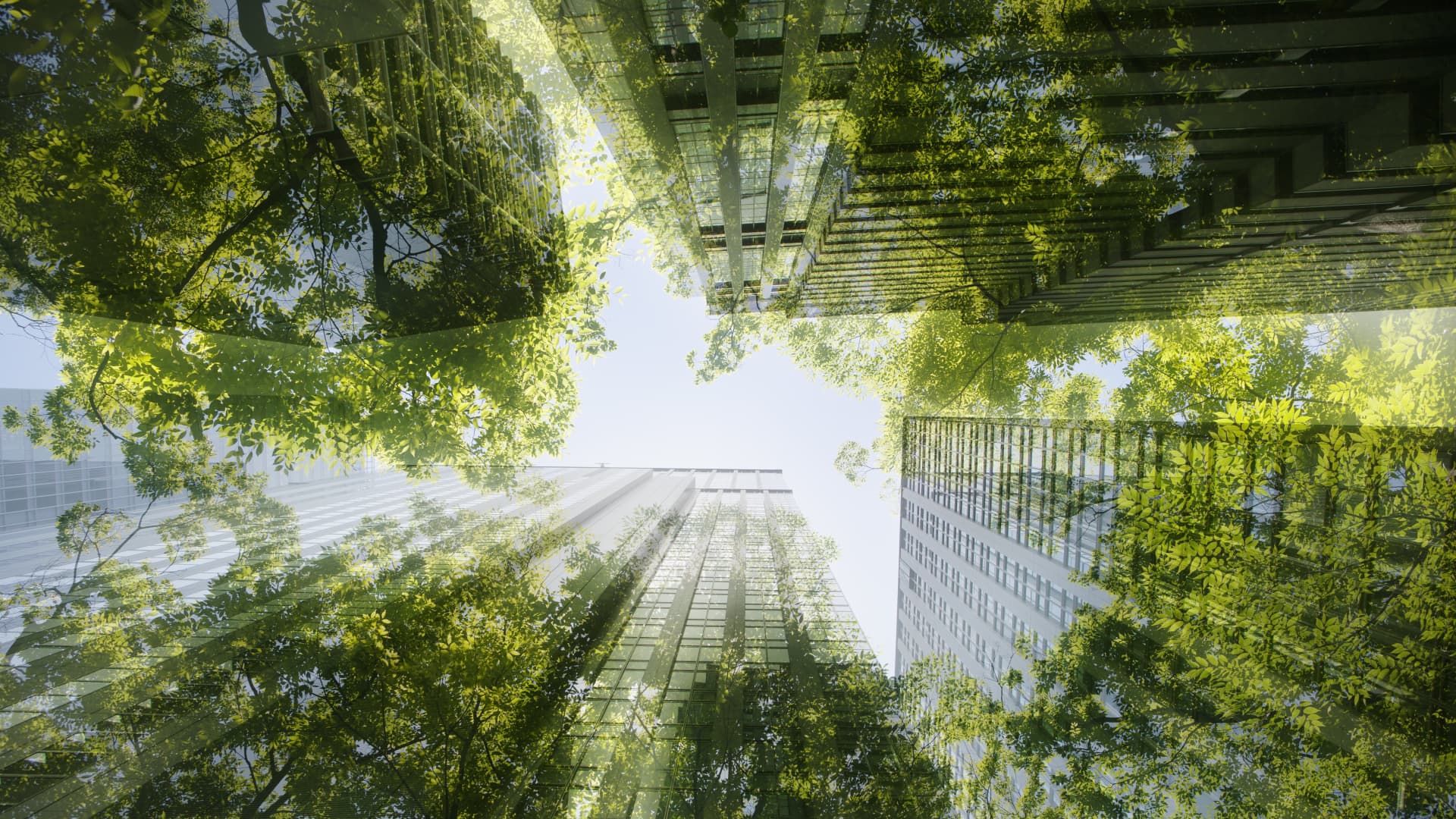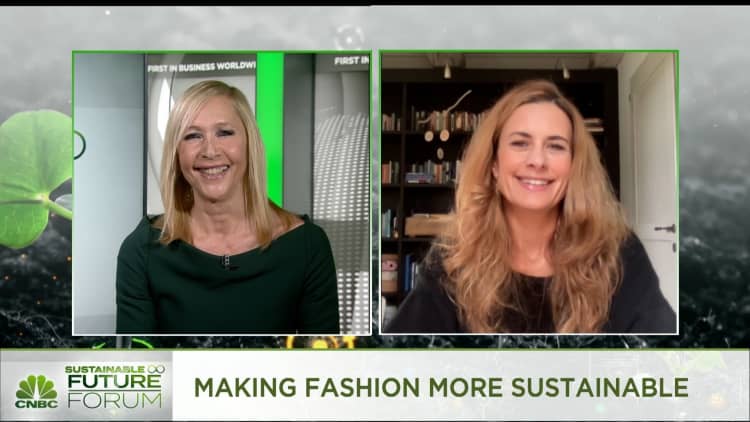London’s ‘green’ offices are expensive. But they may help retain workers

Employee satisfaction is a big motivator for companies to go green, particularly as the U.K. faces its tightest labor market in decades.
Hiroshi Watanabe / Getty Images
LONDON — A fifth of the world’s biggest companies have committed to reaching net-zero carbon emissions, according to analysis by the Energy and Climate Intelligence Unit, and a large portion of those emissions come from the workplace.
Demand for sustainable offices is high, which means prices are, too. In fact, there is now a 26% gap in sale prices between London buildings with sustainability ratings from organizations such as BREEAM and LEED and those without, according to data from analytics company MSCI.
That’s known as the “green premium.” On the flip side, less environmentally friendly, typically older, buildings come with a “brown discount.”
That seems to leave company bosses and investors with a simple choice between lower overheads and lower emissions — but there’s more to the story.
Joy Nazzari is a founding director based in London. She’s looking to grow her business but her former warehouse office building is too small and inaccessible for people with disabilities, so it’s “mission critical” that the team relocates.
“Cost is an incredible barrier,” Nazzari told CNBC, adding that an increase in office size and better green credentials would cause rent to go up by “at least 50%” from what she’s seen on the market so far.
“When we’re looking at buildings with this brown discount it’s hard to not go for a building like ours which is a cute old warehouse,” she said.

Even finding sustainable spaces can be a challenge.
“It’s not like you’re stumbling over these green buildings all over the place. They’re rare,” she said, estimating that fewer than a third of the buildings she’d seen would fit the bill.
That scarcity drives prices up even further. On top of that, there’s company branding to think about.
“In light of the planet burning this might not seem as relevant [but] your office building is a huge reflection of your business’ brand. A lot of new buildings are very office-y and corporate and perhaps not somewhere that we would traditionally choose,” she said.
But Nazzari is facing a lot of pressure to move, particularly from her own employees.
“Our team is really young, and the generation is very alive to the earth they’re inheriting … They’re extremely aware of the green agenda, and they bring it up all the time. It’s a pressure we feel coming up from our team,” she said.
Even with the increased costs, the majority of companies are willing to invest in a green working space, according to the global JLL Future of Work Survey 2022. The research found that 74% of the companies surveyed, represented by 1,095 senior corporate real estate decision makers across 13 countries, “are likely to pay a premium for green credentials,” with 56% planning to do so by 2025.
Big motivator
Employee satisfaction is a big motivator for companies to go green, particularly as the U.K. faces its tightest labor market in decades.
The unemployment rate was 3.5% in October, the lowest it’s been since 1974, according to data from the Office for National Statistics. This then rose to 3.7% in December.
“We have a critical shortage of skills and labour that is damaging firms and holding back growth,” Jane Gratton, head of people policy at the British Chambers of Commerce, said in a press release in November.
Understandably, businesses are eager to retain the staff they’ve got.
“We are all aware that we’re in an environment of nearly full employment and there’s a real need to build an environment in which their staff are working is one that is appealing,” Peter Crowther, junior vice president at the British Council for Offices, told CNBC.
“New employees are more inquisitive as to the performance from an environmental perspective about the building their employer occupies,” he said.
Almost 80% of organizations surveyed in the JLL report said their employees “will increasingly expect the workplace to have a positive impact on the environment” while 75% said the same about a positive impact on society.
And the shift to hybrid working means that every day, employees think about whether there is value in going into the office, according to the CEO of Edge, a sustainable real estate developer.
“We’ve seen so many examples of offices that are such low quality that people don’t want to go into the office any more,” Coen van Oostrom said, adding that the lack of contact can cause a company’s culture to deteriorate.
“What is really expensive is if you have a big office building that’s used one or two days a week. That’s a lot of rent you’re paying for limited face-to-face time,” van Oostrom said.
Tighter financial conditions

Sustainability can be put on the back burner as finances tighten, the BCO’s Crowther said, but it’s becoming more of a priority as climate urgency increases.
“There’s far less of a preparedness to see sustainability drop off the list of needs because I think people are ever more aware about the climate that this isn’t something that is going to go away. It’s not something we can pick up or put down depending on what’s happening in the economy,” Crowther said.
Business owner Nazzari agrees, even if it means she could face a huge rise in costs.
“Do we all just batten down the hatches and focus on the essentials? That’s a real risk for the green agenda. We all have an obligation to make sure we’re maintaining and improving our carbon efficiency through all of this,” Nazzari said.





